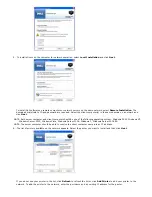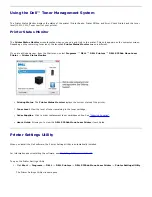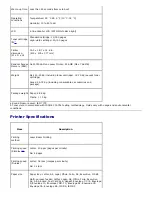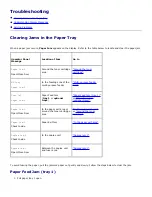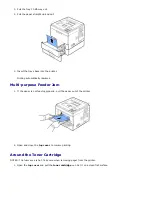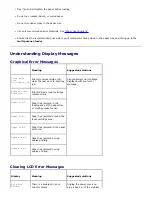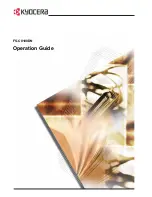
Envelopes
60-105 g/m
2
(16-28 lb)
10 sheet of paper
for the
multi-
purpose feeder
a. The printer supports a wide range of media sizes.
b. Capacity may vary depending on print materials weight and thickness, as well as environmental conditions.
NOTE:
You may experience jams when using print materials with a length of less than 127 mm (5 in). For optimum
performance, ensure that you store and handle the paper correctly. Please refer to
"Printer and Paper Storage
Environment"
.
NOTE:
You can use A4, Letter, Folio, Oficio, Legal-sized paper for duplex printing.
Guidelines for Using Paper
For best results, use conventional 75 g/m
2
(20 lb) paper. Ensure the paper is of good quality, free of cuts, nicks, tears,
spots, loose particles, dust, wrinkles, voids, and curled or bent edges.
If you are unsure of what type of paper you are loading, such as bond or recycled paper,
check the label on the package.
The following problems may cause print quality deviations, jamming, or even damage to the printer:
Symptom
Problem with paper
Solution
Poor print quality or toner
adhesion, problems with
feeding
Too moist, too rough, too
smooth or embossed;
faulty paper lot
Try another kind of paper,
between 100-400
Sheffield, 4%-5%
moisture content.
Dropout, jamming, curl
Stored improperly
Store paper flat in its
moisture-proof wrapping.
Increased gray
background
shading/printer wear
Too heavy
Use lighter paper, use the
rear door
.
Excessive curl problems
with feeding
Too moist, wrong grain
direction or short-grain
construction
Use the
rear door
.
Use long-grain
paper.
Jamming, damage to
printer
Cutouts or perforations
Do not use paper with
cutouts or perforations.
Problems with feeding
Ragged edges
Use good quality paper.
NOTE:
Do not use letterhead paper printed with low-temperature inks, such as those used in some types of
thermography.
NOTE:
Do not use raised or embossed letterhead.
NOTE:
The printer uses heat and pressure to fuse toner to the paper. Ensure that any colored paper or preprinted





